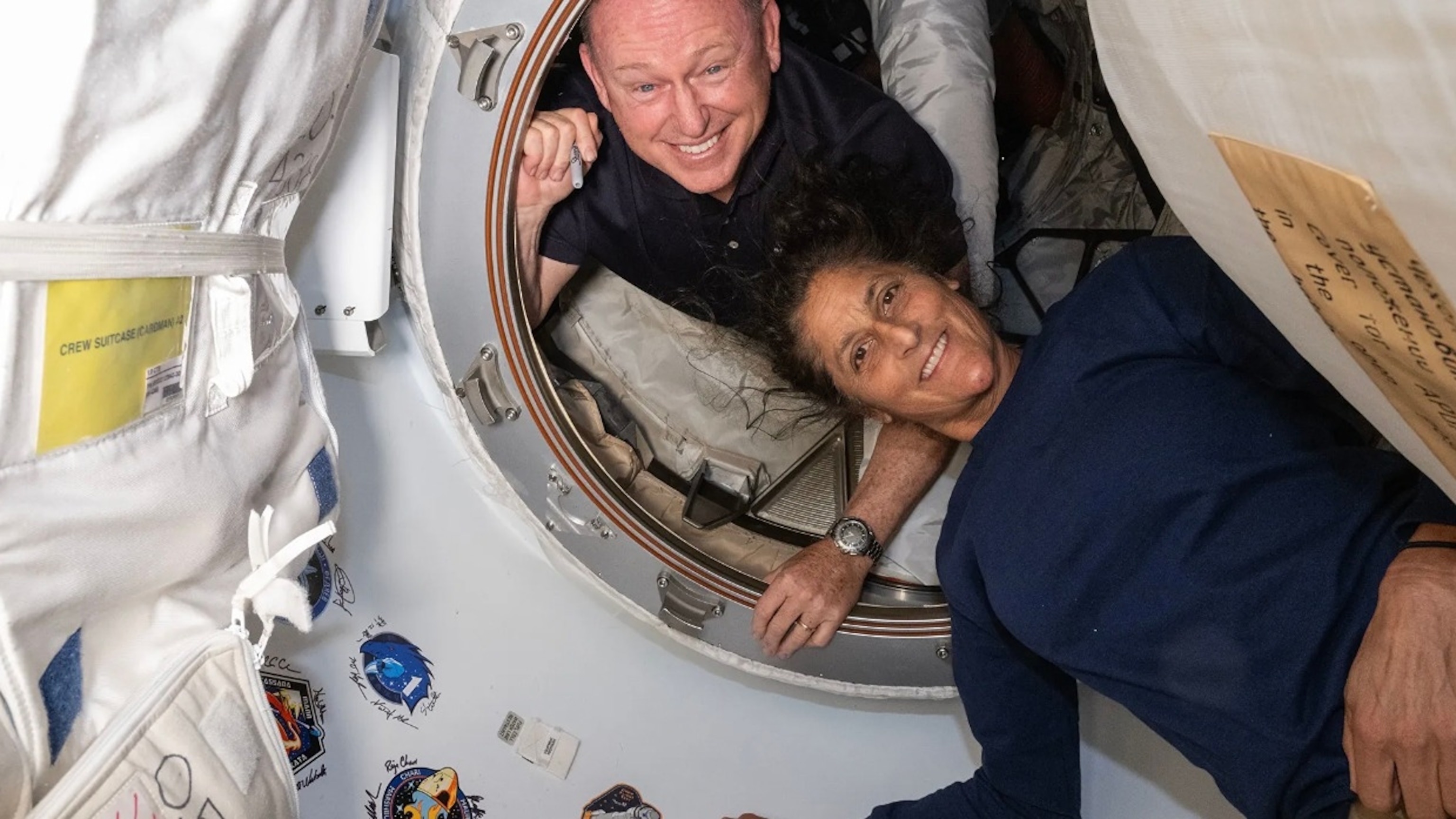The 9 -month -old health impacts in space while 2 NASA astronauts return home after a prolonged stay on the ISS

Astronauts from Nasa Barry “Butch” Wilmore and Sunita “Suni” Williams return to Earth after spending nine unforeseen people in space.
The couple made the first flight from the Starliner capsule to the Space Space (ISS) of the Boeing at the International Space Station (ISS) in June 2024.
Wilmore and Williams only had to spend about a week in space. However, the problems with Starliner have extended their mission for several months and delayed their return until the beginning of 2025.
Experts have said that spending an extended period in space – in particular many months – can come from many changes in human physiology and psychology.
Changes due to microgravity
One of the biggest changes has just spent time in microgravity, which allows astronauts to float inside a spacecraft or outside during the space balls.
During this period, there is a Decrease in muscle mass – Due to a decrease in the use and lack of stimulus through exercise equipment – and bone loss, according to NASA.

NASA Suni Suni Williams and Butch Wilmore astronauts stand together for a photo on the way for the launch pad at the Space Launch Complex 41 on June 5, 2024, in Cape Canaveral, Florida.
Chris O’Meara / AP, files
Without the severity of the earth, bones that support body weight can lose 1% at 1.5% of mineral density on average per month in space, according to the Federal Health Agency.
In addition, without following an appropriate diet and doing the appropriate exercise, astronauts lose muscle mass faster in microgravity than on earth.
NASA also says that in microgravity, blood and cerebrospinal fluid often move upwards to the head and eyes, which causes structural changes of the eyes and brain.
The crews are likely to develop kidney stones due to dehydration or excretation of calcium of their bones without preventive or countermeasures.
When they return to earth, astronauts are Often examined by a medical team As they work to readjust the gravity of the earth and rebalance their balance for daily tasks such as walking and standing position.
Spatial radiation
The radiation of space is different from the radiation encountered on earth. It is made up of three types of radiation: particles trapped in the magnetic field of the earth, the particles of solar eruptions and galactic cosmic rays NASA said.
The earth is surrounded by a system of magnetic fields, called the magnetosphereThis protects people from harmful spatial radiation. However, the A person is higher at altitudeThe higher the dose of radiation, to which they are exposed.
Due to prolonged exposure, astronauts can be at significant risk of radiation disease and have a risk of life cancer, the effects of the central nervous system and degenerative diseases, according to Nasa.
The crews aboard the ISS receive an average of 80 mSv at 160 msv for a six -month stay, according to a 2017 NASA report. Millisieverts (MSV) are measurement units for the amount of radiation absorbed by the body.
Although the type of radiation is different, 1 MSV of space radiation is almost the same as receiving three chest x -rays, said the Federal Space Agency.
In comparison, a person on earth receives an average of 2 MSVs each year from fundamental radiation, said NASA.
“In low terrestrial orbit where the ISS is located, astronauts are at least partially protected by the magnetosphere which protects the land from exposure to radiation from deep space,” said Dr. Rihana Bokhari, actual scientific director at the Baylor College of Medicine Research Institute for Space Health, said ABC News previously.
“However, they have a greater exposure to radiation than those on earth because the ISS goes through areas of radiation trapped on their orbit,” she continued. “Butch and Suni, because they are on the ISS, will not be exposed to enough radiation to seriously cause significant impacts on corporal systems, but exposure to long duration to larger radiation than on earth could lead to an increase in the risk of cancer.”
Isolation in space
There are also physical and psychological effects that have just been isolated and in a closed environment for a long time.
NASA says that the crews selected for the ISS missions are carefully chosen and trained To ensure that they can manage a mission that can last six months or more.

Astronauts from NASA Boeing Crew Test Butch Wilmore and Suni Williams inside the vestibule between the front port of the Harmony module of the international space station and the Starliner spaceship.
Nasa
However, research has shown that this type of environment, that someone be in space can cause behavioral changes and cause fatigue, stress and loss of sleep.
NASA said that researchers are studying means to help ward off the negative effects of isolation, including the use of virtual reality to “stimulate space garden.
Dr. Jennifer Fogarty, scientific director of the Baylor College Translational Research Institute of Medicine, said previously to ABC News that there were also changes in the immune system during this period, often the result of chronic stress, which is why it is important to create an environment as healthy as possible for astronauts during missions.





